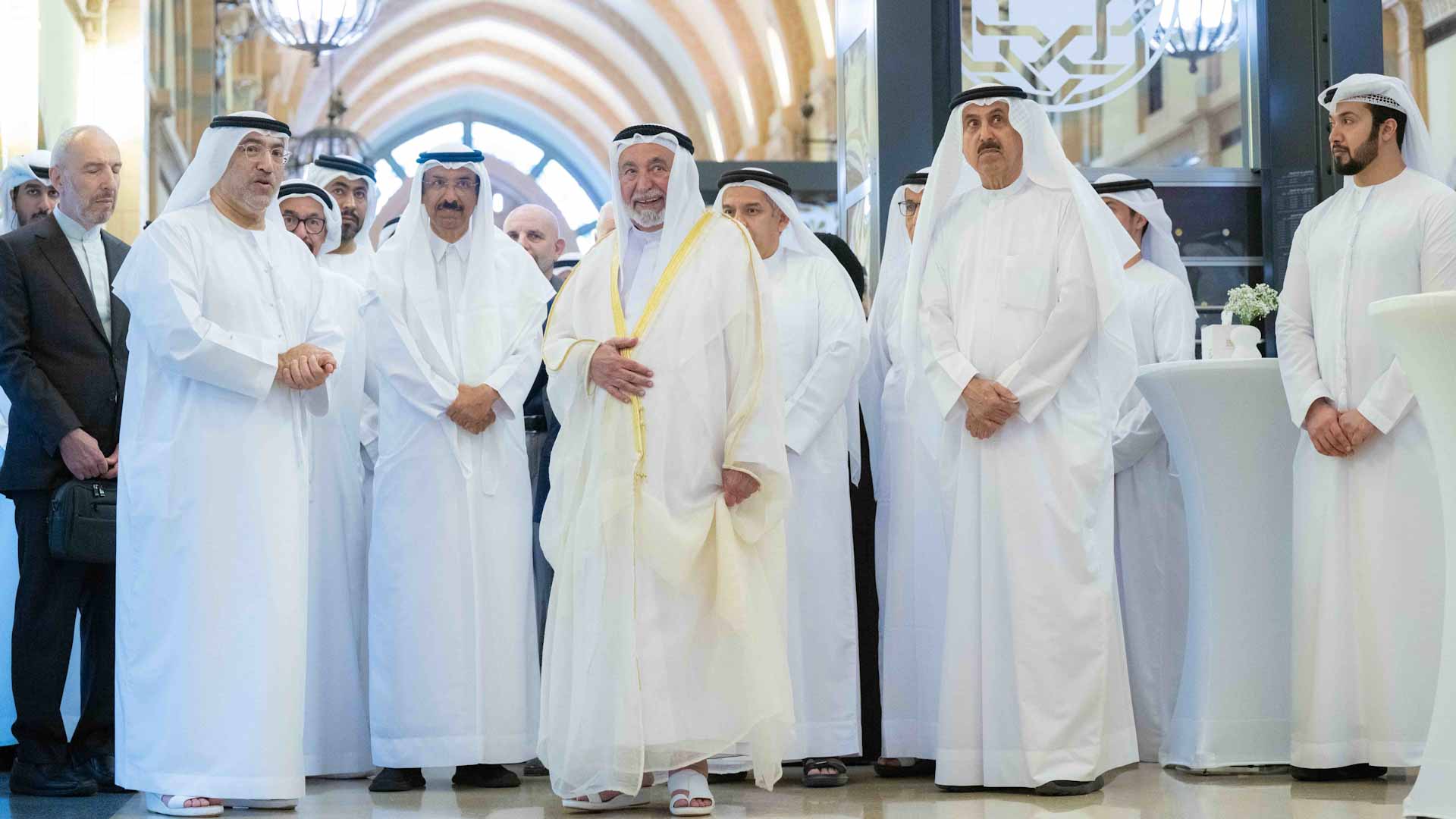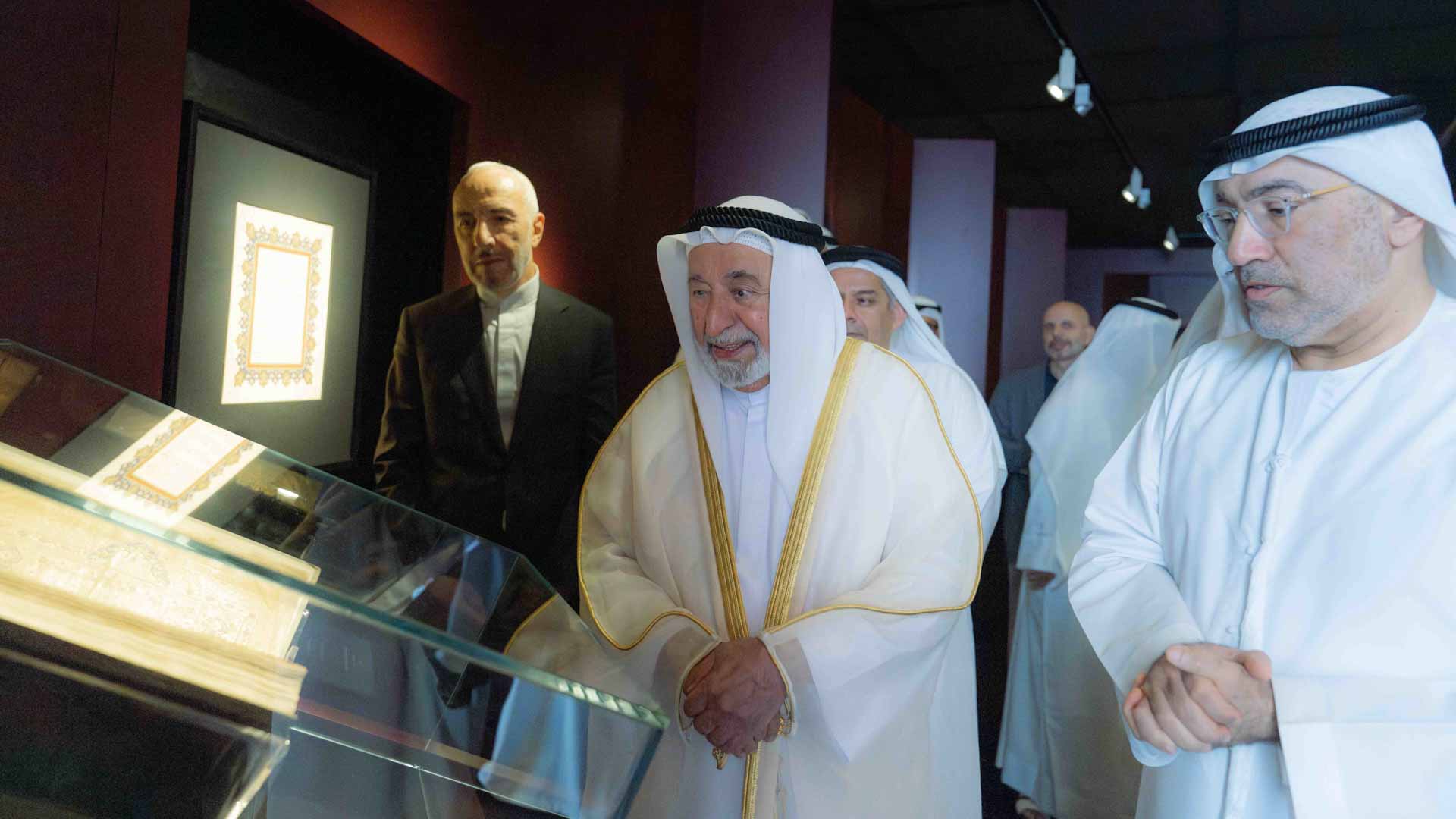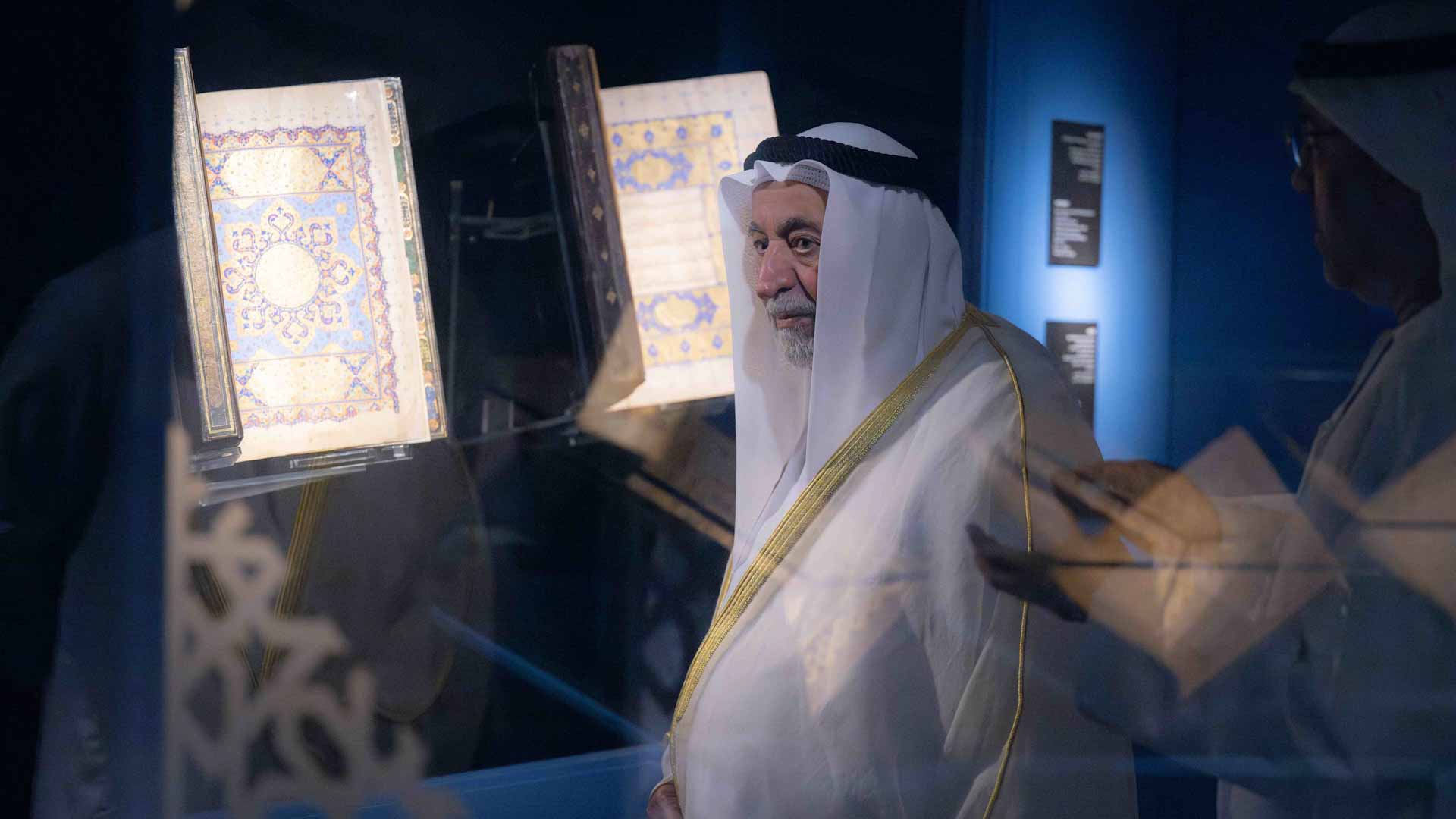Upon his arrival, His Highness was received by His Excellency Saqr Ghobash, President of the Federal National Council, Sheikh Salem bin Abdulrahman Al Qasimi, Chairman of the Ruler's Office, Sheikha Nawar bint Ahmed Al Qasimi, Director of the Sharjah Art Foundation, His Excellency Abdul Rahman bin Mohammed Al Owais, Minister of Health and Prevention, His Excellency Mohammed Al Murr, Chairman of the Board of Mohammed bin Rashid Al Maktoum Library along with several heads and general directors of local government departments in Sharjah, as well as intellectuals and enthusiasts.

The exhibition offers a cultural and historical journey spanning 1,300 years of Quranic manuscript history and Arabic calligraphy through showcasing exhibits that are part of the private collection of His Excellency Abdul Rahman bin Mohammed Al Owais, Minister of Health and Prevention.
The collection, meticulously curated over two decades, reflects the diversity of styles and cultural and artistic traditions of Arabic and Islamic calligraphy and highlights the mutual influence between these traditions, ranging from China to Andalusia.

His Highness toured the various sections of the exhibition, which showcase 81 Quranic manuscripts displayed for the first time. These manuscripts celebrate the heritage of Arabic calligraphy and the aesthetic value of Quranic manuscripts across different eras and nations and represent exquisite examples of Quranic production, including writing, preservation, decoration, binding, and colouring.
His Highness toured the exhibition’s seven sections, which reflect different historical periods of Quranic manuscripts and pages in varying sizes, scripts, and Islamic ornamentation. These sections showcase the evolution of Arabic and Islamic calligraphy over the centuries.

The exhibition sections included themes such as: "From Text to Art: The Early Islamic Centuries," "The Art of Writing in an Era of Change: 10th to 13th Centuries," "Andalusia and North Africa: The Western Tradition," "Imperial Designs: Iran, India, and Turkey," and "The Lineage of Calligraphers: Ottoman Script Traditions."
His Highness also listened to detailed explanations of the exhibition's items, including the evolution of Quranic manuscripts, such as the Blue Quran written in gold on indigo-dyed parchment, and others commissioned by prominent figures of the time. Additionally, His Highness viewed manuscripts highlighting the beauty of Islamic calligraphy and the diverse methods used in Quranic transcription. These manuscripts expressed regional characteristics and a shared cultural foundation. The scripts on display ranged from Muhaqqaq, Ta’liq, Moroccan scripts in their various forms, Naskh, Ruq’ah, Rayhan, Thuluth, and others.
His Highness stopped at a variety of exhibits, including rare pages of the Quran written in Hijazi and Kufic scripts from the 7th century, as well as gilded pages from later Islamic periods, such as the Ottoman, Persian, and Andalusian eras.
At the end of the opening ceremony, His Highness received a commemorative gift from His Excellency Abdul Rahman bin Mohammed Al Owais. The gift was an Arabic manuscript of the Holy Quran, a Safavid model from Iran, written on paper in black ink in Naskh script. It was crafted by Mir Mohammed Saleh Mohammed Hussein Al Mousawi in 1682 AD.


 The exhibition offers a cultural and historical journey spanning 1,300 years of Quranic manuscript history and Arabic calligraphy through showcasing exhibits that are part of the private collection of His Excellency Abdul Rahman bin Mohammed Al Owais, Minister of Health and Prevention.
The exhibition offers a cultural and historical journey spanning 1,300 years of Quranic manuscript history and Arabic calligraphy through showcasing exhibits that are part of the private collection of His Excellency Abdul Rahman bin Mohammed Al Owais, Minister of Health and Prevention. His Highness toured the various sections of the exhibition, which showcase 81 Quranic manuscripts displayed for the first time. These manuscripts celebrate the heritage of Arabic calligraphy and the aesthetic value of Quranic manuscripts across different eras and nations and represent exquisite examples of Quranic production, including writing, preservation, decoration, binding, and colouring.
His Highness toured the various sections of the exhibition, which showcase 81 Quranic manuscripts displayed for the first time. These manuscripts celebrate the heritage of Arabic calligraphy and the aesthetic value of Quranic manuscripts across different eras and nations and represent exquisite examples of Quranic production, including writing, preservation, decoration, binding, and colouring.  The exhibition sections included themes such as: "From Text to Art: The Early Islamic Centuries," "The Art of Writing in an Era of Change: 10th to 13th Centuries," "Andalusia and North Africa: The Western Tradition," "Imperial Designs: Iran, India, and Turkey," and "The Lineage of Calligraphers: Ottoman Script Traditions."
The exhibition sections included themes such as: "From Text to Art: The Early Islamic Centuries," "The Art of Writing in an Era of Change: 10th to 13th Centuries," "Andalusia and North Africa: The Western Tradition," "Imperial Designs: Iran, India, and Turkey," and "The Lineage of Calligraphers: Ottoman Script Traditions."